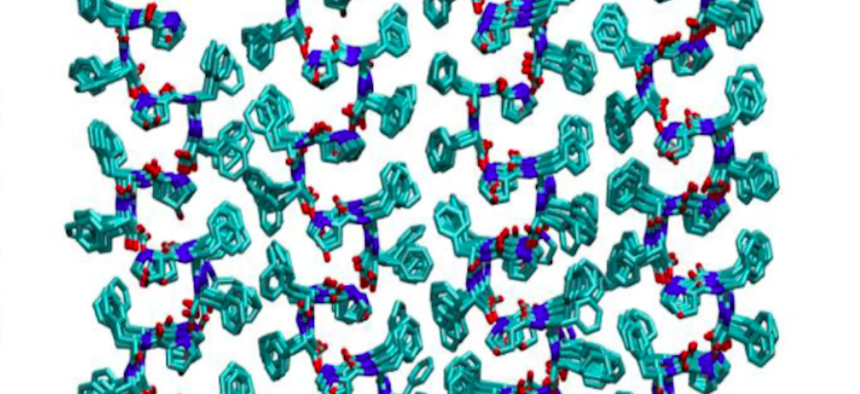
from Molecular engineering of piezoelectricity in collagen-mimicking peptide assemblies. A depiction of the unique Hyp-Phe-Phe nanomaterial Nature Communications ISSN 2041-1723
New Material May Power Tomorrow’s Cyborg Soldiers
Israeli researchers may have found a way for human body movement to power implanted devices indefinitely.
Biological implants—devices implanted inside the human body—hold rich promise, but powering such devices isn’t easy. Pacemakers, for instance, require a battery change every five to 15 years.
However, a new material engineered by Isreali researchers could allow human movement to safely power implanted devices indefinitely. That could be of use to the military, which has shown increasing interest in not only synthetic biotechnology but also biological implants over the past few years, to give soldiers new capabilities, such as as the ability to communicate information silently, as well as to report on things like the current state of soldier health, possible exposure to diseases, toxins, or other materials., or even enhancing cognitive capabilities and memory.
The material is loosely derived from collagen, the most common protein found in the human body. It’s both strong and flexible—part of the reason collagen is so popular in plastic surgery treatments. But it’s a very complex molecule, making it difficult for researchers to work with.
In April of 2019, Isreali scientist Ehud Gazit of Tel Aviv Universityand his colleagues published a paper on a new collagen-like molecule engineered using nanotechnology, or technology engineering at a scale of a billionth of a meter in size. The new molecule was a sort of simplified version of collagen, but consisting of only three amino acids.
In the May 2021 issue of the journal Nature Communications, they describe how they realized a new use for the material, as a means of energy.
“The large number of directionally aligned hydrogen bonds in the helical structure [of collagen] creates a macroscopic dipole that can couple with external electric fields and shear force to produce the piezoelectric response of collagen,” they write.
In other words, the unique shape of hydrogen bonds, a helix, can allow it to serve as a sort of antenna for electricity—transferring electricity within the body that is produced through natural movement.
When objects rubbing together produce an electric field, it’s called a piezoelectric response. Engineers have used the phenomenon for things like generating electricity from the foot movements of commuters through a busy Tokyo train station. The body is also capable of producing electrical fields through movement and friction, which the new material is particularly adept at capturing, the new research shows, potentially enough to power small implanted devices.
Powering such devices is often one of the greatest challenges in the emerging field of implants, since piezoelectric materials in other settings often use lead or other components that the body can’t handle. The new research provides a much safer pathway for using the body’s own movement to power future cybernetic gear.





